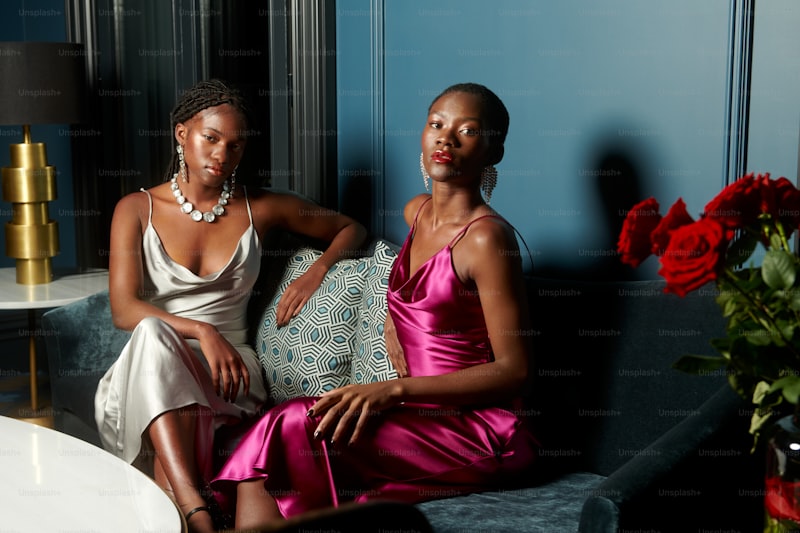Exploring Luxury Fabrics for Couture Gowns: A Comprehensive Guide
Understanding Luxury Fabrics for Couture Gowns
When it comes to creating breathtaking couture gowns, the choice of fabric is paramount. Luxury fabrics not only enhance the aesthetic appeal of the gown but also provide the necessary structure and comfort for the wearer. In this article, we'll explore the various luxury fabrics available for couture gowns, their unique qualities, and how they can elevate your designs.
The Essence of Couture Fashion
Couture fashion is synonymous with opulence and exclusivity. Every detail of a couture gown is meticulously crafted, from the initial design sketch to the final stitch. The foundation of any couture piece lies in its fabric. Therefore, understanding the different types of luxury fabrics available and their characteristics is essential for designers and fashion enthusiasts alike.
Types of Luxury Fabrics
Below is a table summarizing some of the most popular luxury fabrics used in couture gowns, highlighting their unique features:
| Fabric | Characteristics | Best Uses |
| Silk | Soft, smooth, and lustrous; known for its drape and breathability. | Evening gowns, bridal wear, and flowing dresses. |
| Satin | Shiny and smooth on one side, matte on the reverse; holds its shape well. | Ball gowns and structured silhouettes. |
| Taffeta | Crisp and firm; creates volume and structure. | Full skirts and layered designs. |
| Chiffon | Lightweight and sheer; provides a delicate floating effect. | Overlay and lining for ethereal gowns. |
| Lace | Intricate and delicate; adds texture and a romantic touch. | Dresses with floral patterns and vintage style. |
| Velvet | Soft texture and rich appearance; creates a sense of luxury. | Formal wear and evening gowns. |
Popular Luxury Fabrics Explored
Silk
Silk is the epitome of luxury. Its natural sheen and soft texture make it a favored choice for couture gowns. Available in various types such as satin silk, georgette, and dupioni, silk can cater to a multitude of designs. Whether you're aiming for a sleek evening gown or a flowing bridal dress, silk provides the perfect canvas for intricate embellishments and detailed stitching.
Satin
Satin is renowned for its glossy finish and smooth texture. It is made from silk or synthetic fibers and is ideal for structured gowns that require a little extra body. The fabric's ability to hold its shape lends itself well to ball gowns and dresses with dramatic silhouettes. Designers often choose satin for statement-making pieces that need to stand out.
Taffeta
Taffeta is a crisp fabric known for its unique ability to hold volume. This makes it a perfect choice for designers looking to create full skirts or layered designs. Taffeta gowns are often seen in formal settings, where they create a striking presence. The fabric can sometimes be merged with other materials for enhanced textures and designs.
Chiffon
Chiffon gives a romantic flair to couture gowns. This lightweight, sheer fabric often serves as an overlay, adding a delicate touch to heavier fabrics. Chiffon wraps and layers beautifully, making it ideal for ethereal designs that evoke a sense of grace and fluidity. It is frequently used in bridal collections to create that dreamy, fairy-tale look.
Lace
Lace is an intricate fabric that adds depth and detail to any gown. Often used for overlays, accents, or entirely for the dress, lace is beloved for its romantic appeal. Vintage-inspired gowns, especially those intended for weddings, often incorporate lace to enhance their charm. The variety of lace patterns available allows for a personalized touch in couture designs.
Velvet
Associated with winter couture, velvet is a fabric known for its rich texture and luxurious feel. Whether in a deep jewel tone or classic black, velvet adds depth to evening gowns, providing warmth and elegance during colder months. Its soft touch and sheen can transform a simple design into an extravagant statement piece.
Choosing the Right Fabric for Your Gown
When selecting fabric for your couture gown, consider the following factors: the style of the gown, the occasion, and the wearer's body type. Selecting the appropriate fabric can elevate the overall aesthetic, ensuring that the gown not only looks stunning but also feels comfortable. Additionally, the choice of fabric can influence the gown's structure and silhouette. For instance, a fitted gown may require a stiffer fabric like satin or taffeta, while a flowing design may benefit from softer fabrics like chiffon or silk.
Care and Maintenance of Luxury Fabrics
Luxury fabrics require gentle care and maintenance to preserve their quality and appearance. Here are some tips for caring for couture gowns:
- Dry Clean Only: Most luxury fabrics should be dry cleaned to avoid damage.
- Avoid Direct Sunlight: Protect your gown from prolonged exposure to sunlight, which can cause fading.
- Store Properly: Use breathable garment bags and avoid plastic covers to prevent moisture buildup.
- Handle with Care: When trying on or displaying your gown, handle it gently to avoid snags or tears.
Conclusion
In summary, choosing the right luxury fabric for couture gowns is essential for achieving the desired look and structure. From the timeless allure of silk to the romantic elegance of lace, each fabric offers unique qualities that can enhance a designer's vision. Whether you are designing a wedding gown, evening wear, or a red carpet look, understanding these fabrics will guide your design choices and help create stunning pieces that leave a lasting impression.
Suggestions: When crafting your couture creation, always consider the wearer's personality and preferences. Experimenting with combinations of fabrics can yield remarkable results, creating truly unique and personalized gowns. Remember to stay updated on fabric trends and innovations to continuously enhance your designs, ensuring your creations remain relevant in the ever-evolving world of fashion.
